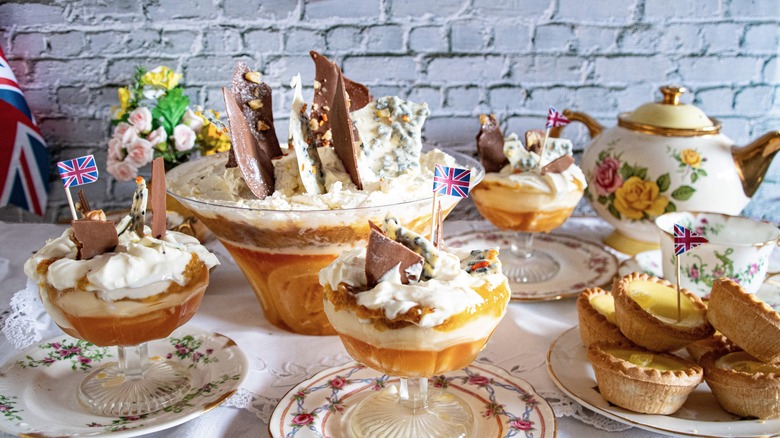Why It's A Bad Idea To Make A Trifle Too Far In Advance
A traditional trifle is a beautiful, delicious showstopper dessert for the end of any meal. The many layers of the trifle as seen through its glass dish can be color coordinated to any holiday or occasion to blow your guests away. To make the most of your trifle's aesthetic qualities though, it's important that it isn't made too far in advance.
Trifles were originally made in England in the late 16th century, per Britannica. They're still a popular English dessert today though, and a lemon trifle even decorate the dining table of Queen Elizabeth II's Platinum Jubilee earlier this year. They're also the predecessor of ice cream cakes as well.
One of the best things about trifles is that they are so easily customizable. Spruce Eats points out that a trifle is mostly defined by its many layers. These can consist of fruits, custards, whipped cream, or jell-O. A traditional English trifle often contains at least one layer of cake — sometimes soaked in alcohol — as well, but there are no required elements that define a trifle. This makes the dessert a great expression of creativity, just don't go as far as Rachel did on "Friends" and add beef to a dessert trifle. Whatever you decide to put in your trifle, make sure you're not assembling it too far in advance.
Trifles should be assembled an hour ahead
It might be tempting to make your dessert a day ahead of a dinner party or other gathering, but working ahead isn't the best idea for a trifle. Better Homes and Gardens reports that assembling your dessert too far ahead of time may cause the different layers to settle together too much. It's important that the layers of the trifle are always distinctive, and if it's assembled ahead of time they can start to mix into each other. It's smart to plan ahead and prepare your ingredients, but they should stay separated until at least an hour before being served.
Spruce Eats notes that it is vital for some ingredients like the Jell-O to have time to set up in the refrigerator. It's key to take setting times and other considerations into account when planning your assembly time. Otherwise, you'll be serving a muddied trifle with layers collapsing into each other. It'll still taste great, but that show-stopping moment will be gone.

